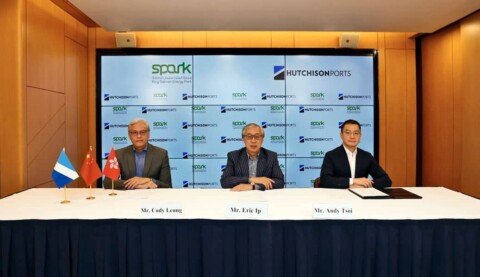Continuing its drive towards sustainability and increasing use of renewable energy sources, PSA Mumbai inaugurated a 1-megawatt (MW) Solar Farm on 18 February, 2022. The 1.3- hectare facility, featuring rooftop solar panels, is projected to generate 13 per cent of PSA Mumbai’s annual power requirements and reduce CO2 emissions by over 1,200 tonnes per year.
PSA Mumbai is targeting a 50% reduction in carbon emissions by 2030 (against a 2019 baseline year). Among major initiatives underway, the terminal will deploy a fleet of all-electric Rubber-tyred Gantry Cranes and other e-vehicle options for its Phase 2 development. When the Dedicated Freight Corridor (DFC) rail link reaches JNPT, we can work towards the goal of carrying out zero-emission transportation of a container from a vessel alongside PSA Mumbai, via its DFC-ready rail yard and all the way to National Capital Region; as well as many of the 56 Inland Container Depot destinations currently served by rail from the terminal.
At the inauguration ceremony, Sivakumar Kaliannan, Managing Director of PSA Mumbai said, “We are very pleased to commission the solar farm and tap this resource for a brighter and cleaner tomorrow. Along with many other stakeholders, we are accelerating our efforts in this direction and are pleased to play our part towards meeting JNPT’s target under the Maritime India Vision 2030 of 60% renewable power usage.”
Managing Director of PSA India Mike Formoso expressed, “The commissioning of this solar farm at PSA Mumbai, and the delivery earlier this week of hybrid Rubber Tyre Gantry cranes to PSA Chennai as they celebrated their 9th millionth-TEU handled since the start of the terminal’s operations, underscores our drive to reduce emissions whilst growing PSA India’s volumes and footprint across India. Across our terminal and Container Freight Station entities, many more sustainability initiatives are well underway, ranging from biofuels to energyefficient smart LED lighting as we work to halve our emissions by 2030.”







